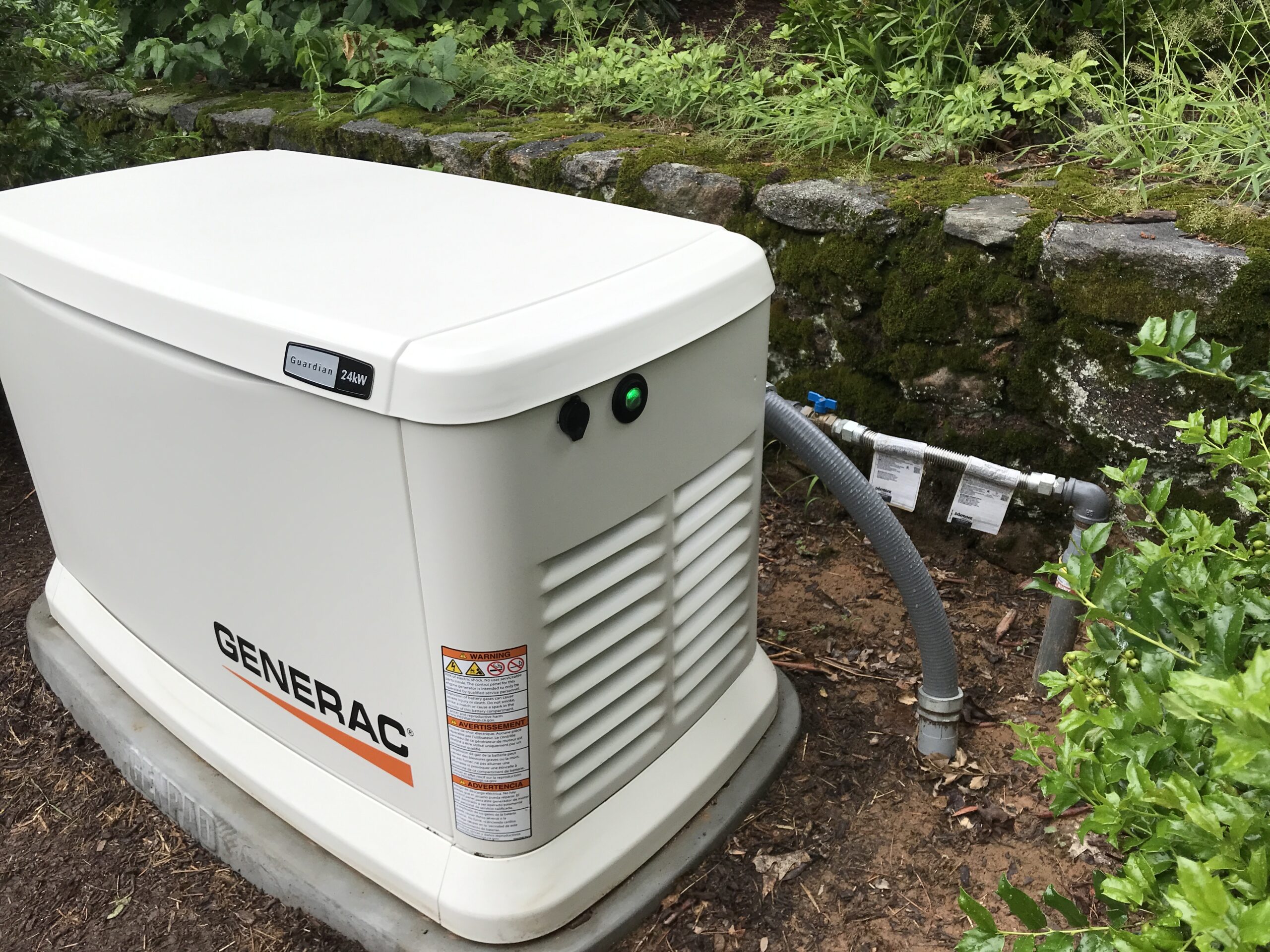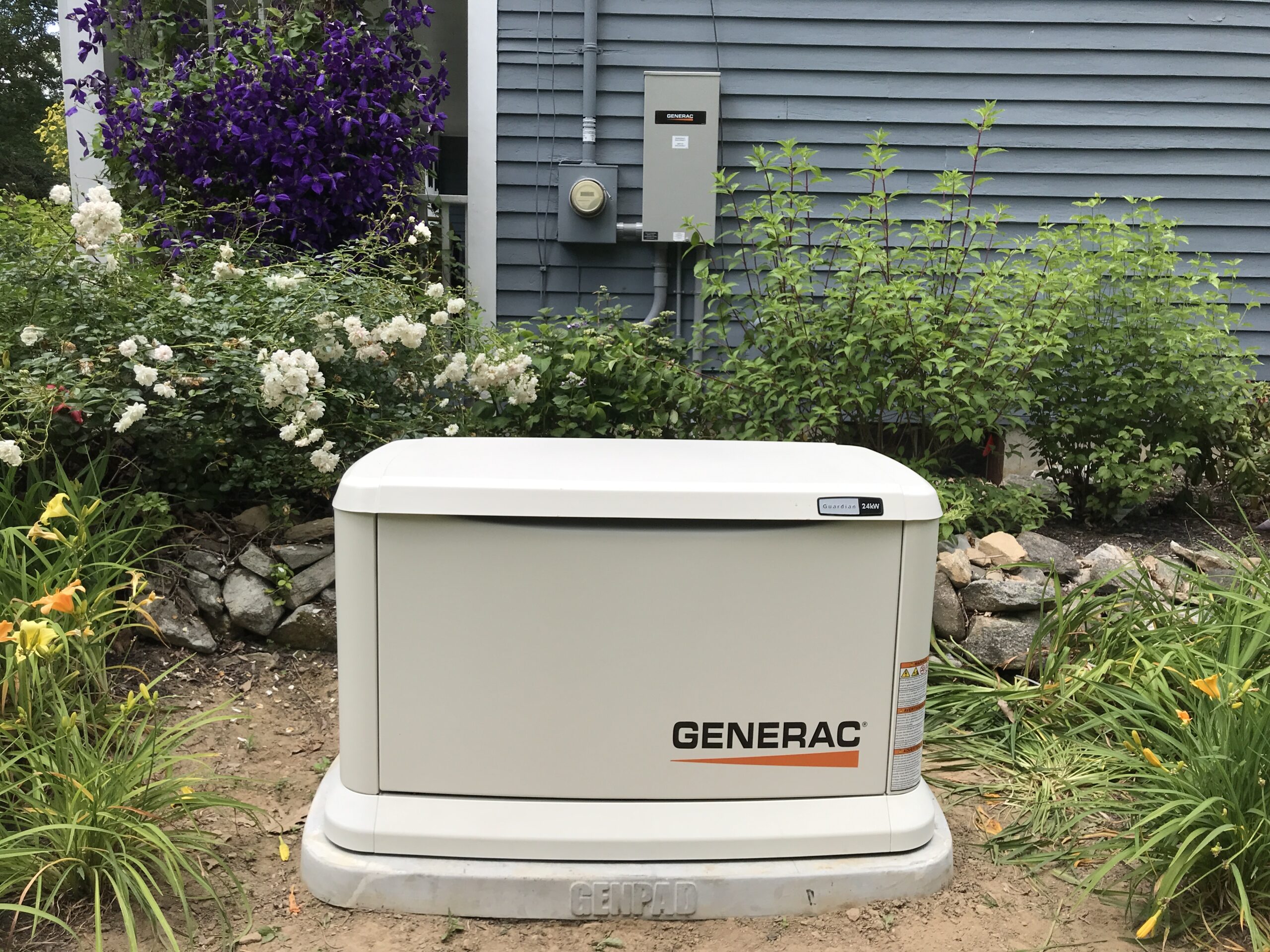
May 21, 2025
When storms roll in and the grid goes down, your home generator becomes your lifeline by keeping lights on, fridges cold, and life moving. But just like any piece of machinery, your generator needs consistent care to perform when it matters most.
From prepping for hurricane season in Greater Hartford or winterizing your North Haven property, following a thorough whole-house generator upkeep checklist is the best way to protect your investment and ensure your family’s safety. At PE Home Generators, we’re here to walk you through every step.
Why Generator Maintenance Is a Must
When it comes to standby generator maintenance, “set it and forget it” is a risky mindset. Even the most robust units need attention to stay storm-ready. Skipping routine checks could mean failure to start during an outage, and that’s the last thing you want when you’re depending on backup power!
Maintenance protects your family from the dangers of prolonged outages, like spoiled food, frozen pipes, or non-functioning medical equipment. It also extends the life of your generator, helps preserve the warranty, and increases resale value if you ever decide to upgrade or sell your home.
A Maintenance Timeline That Works
To keep everything in top shape, it helps to follow a structured timeline for your residential generator maintenance.
After Every Outage
Once the power comes back on, take 10–15 minutes to check your generator. Look for any visible wear or unusual smells, and confirm that fluid levels are still in the safe zone. Jot down how long it ran, as this counts toward your next 100-hour oil change.
Monthly Checks
At least once a month, run a 10-minute exercise cycle (many units do this automatically). While it’s running, listen for odd noises or vibrations. After it shuts off, check for leaks and make sure the area around the unit is clear of leaves, snow, or debris.
Quarterly Tasks
Every three months, inspect your battery voltage using a multimeter. Clean out air intakes, make sure ventilation panels are clear, and double-check fuel levels. If your generator uses propane, confirm that tank valves are secure and regulator pressure is within range.
Annual Professional Service
Once a year, schedule a detailed service appointment with a certified technician. This includes everything from generator load-bank testing to spark plug replacements, oil changes, filter swaps, and a full inspection of electrical and mechanical components.
Set Up Your Workspace the Right Way
Before rolling up your sleeves, make sure you’re working safely. Always turn the generator off and let it cool for at least 15-30 minutes. Hot engine components can cause serious burns, and fuel lines may still be under pressure immediately after a run.
Wearing insulated gloves and safety glasses is strongly recommended. It’s also smart to keep a fire extinguisher nearby just in case you’re dealing with fuel components or exposed wiring.
And don’t underestimate your generator manual, as it’s full of model-specific insights that can make or break your DIY maintenance efforts. Whether you’re checking torque specs or looking up fault codes, it’s an indispensable tool.
The Inspection That Can Save You Thousands
Before you start changing fluids or tightening wires, always begin with a full exterior and interior inspection. Check the housing for cracks, rust, or signs of impact, especially if your unit is exposed to the elements.
Pop the access panels and give the interior a good look. Are any wires hanging loose? Do you see corrosion on terminals or puddles forming below? These early warning signs can prevent catastrophic failure down the line.
Also, take a few minutes to clear any obstructions around the generator. Debris, weeds, and snow can all choke airflow and cause overheating. We’ve seen leaves clog intake vents and lead to shutdowns during critical outages!
Fluids and Filters: The Essentials of Engine Health
Your generator’s engine needs clean fluids to function. That starts with fuel quality. For gasoline or diesel units, inspect for moisture contamination or old fuel. Stale fuel gums up carburetors and fuel injectors, leading to start-up failures. Use stabilizers if your unit sits idle for long stretches.
Oil changes are perhaps the most important regular task. Check the oil level using the dipstick and top off if needed. Then, every 100 hours of operation (or at least annually), drain and replace the oil and swap out the oil filter. It’s a small step that has a huge impact on longevity.
Don’t forget about the air filter! A dirty filter restricts airflow and causes your engine to run hotter and less efficiently. Be sure to replace your fuel filter during your annual servicing to prevent contaminants from clogging your fuel lines.
Finally, inspect your coolant level and radiator condition. Coolant keeps the engine from overheating and protects against freezing. Low coolant can trigger auto-shutdowns – less than ideal during an outage..
Battery Systems & Electrical Check-Up
A strong battery means a fast, reliable startup. Check your battery’s voltage at least once every three months using a multimeter. If you notice it’s low, recharge it or consider replacing it before it dies completely.
Look at the terminals: are they clean, tight, and free of corrosion? If you see white or blue residue, that’s corrosion buildup affecting your voltage flow. Clean it with a simple baking soda and water solution, then coat terminals with dielectric grease for added protection.
While you’re inside, take a few minutes to examine spark plugs, ignition wires, and grounding cables. Loose connections or damaged wires can interrupt the ignition cycle and prevent the generator from firing up.

Let’s Talk ATS: Automatic Transfer Switch Testing
The Automatic Transfer Switch (ATS) is what allows your generator to automatically sense a power outage and begin supplying electricity to your home. If this system isn’t functioning correctly, your generator could be fine, but your house will stay in the dark.
That’s why we recommend manually testing the ATS at least once a year. Flip off your home’s main breaker to simulate an outage, then watch the transfer switch engage. It should move your power load to the generator within seconds. Once you restore grid power, make sure the ATS reverts properly.
Don’t ignore your control panel during these checks. Blinking lights or warning codes could indicate bigger problems. If your system includes Wi-Fi or Bluetooth, update the firmware regularly, especially before storm season. These updates fix bugs and improve diagnostics.
Load-Bank Testing: The Real-World Stress Test
If you’ve never run a load-bank test, you don’t really know if your generator can handle a true power outage. This test simulates your home’s full power demand, pushing the generator to its rated capacity for 30+ minutes.
Why is this important? Because it uncovers issues that light self-tests don’t. A unit might run fine with no load but fail under pressure, exactly when you need it most. It also helps burn off unburned fuel and moisture buildup, which can cause carbon fouling (aka “wet stacking”).
At PE Home Generators, this is a core part of our yearly generator tune-up package. If you’re not doing it, you’re running blind.
Documentation That Makes a Difference
Think keeping a maintenance log is overkill? Think again! Recording the date, service type, parts replaced, and technician notes can save your warranty, as manufacturers often require proof of routine maintenance when claims arise.
We recommend keeping both a physical notebook and a digital record. That way, if you ever need to reference a specific part or repair history, it’s all at your fingertips. Some Generac models even sync with mobile apps that automate this process for you.
Also, a solid service record increases the value of your generator should you ever sell your home or upgrade your unit.
The Mistakes We See Too Often
Some of the biggest generator failures we’ve seen could’ve been prevented with just a little TLC. Here are the most common missteps:
- Letting fuel go bad without stabilizers
- Forgetting to change the oil
- Allowing vents to get blocked by mulch, snow, or patio furniture
- Ignoring flashing red lights on the control panel
- Skipping load testing “because the generator sounds fine”
Don’t fall into these traps. A little preventative maintenance saves a lot of heartache (and repair bills) later.
Call the Experts at PE Home Generators
While there’s plenty you can handle yourself, some tasks really are better left to the professionals. Our team of certified Generac technicians brings years of experience servicing systems all across North Haven and Greater Hartford. We know these systems inside and out, and we’re passionate about helping you protect your home.
So, whether you need a full system tune-up, load-bank testing, or emergency diagnostics, PE Home Generators has your back. We’re Connecticut’s trusted source for residential backup power peace of mind.
Let’s Get You Storm-Ready
Your generator is your safety net; don’t wait until the next outage to find out it’s not up to the task. Give your system the attention it deserves, and when the next storm hits, you’ll be sitting comfortably with the lights on and the fridge running. Contact PE Home Generators today to learn more information, or give us a call!
Recent News

Must-Have Hurricane Preparedness Items for CT Residents
May 5, 2025

Top Winter Generator Maintenance Tips for Connecticut Homeowners
October 30, 2024

Portable vs. Standby: Choosing the Right Generator for Your CT Home
August 7, 2024

Stay Safe During the 2024 Hurricane Season with a Generator
May 20, 2024

Why Spring is the Ideal Season for Installing a Home Generator in Connecticut
April 24, 2024

Generator Safety Dos & Don’ts for Connecticut Households
March 6, 2024

